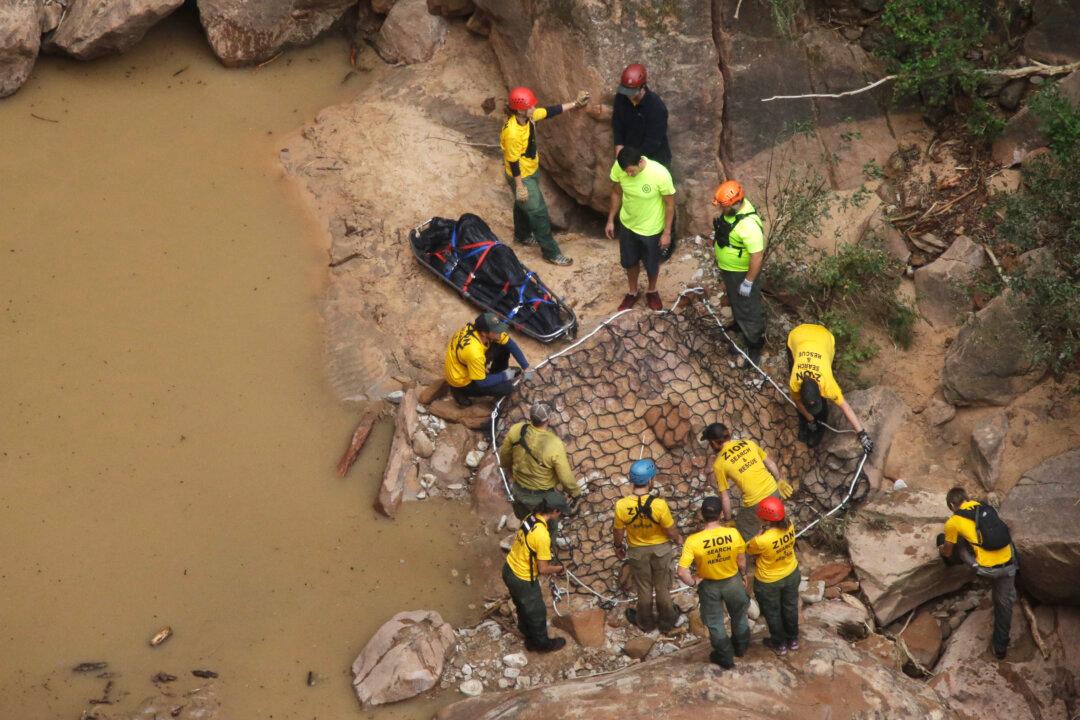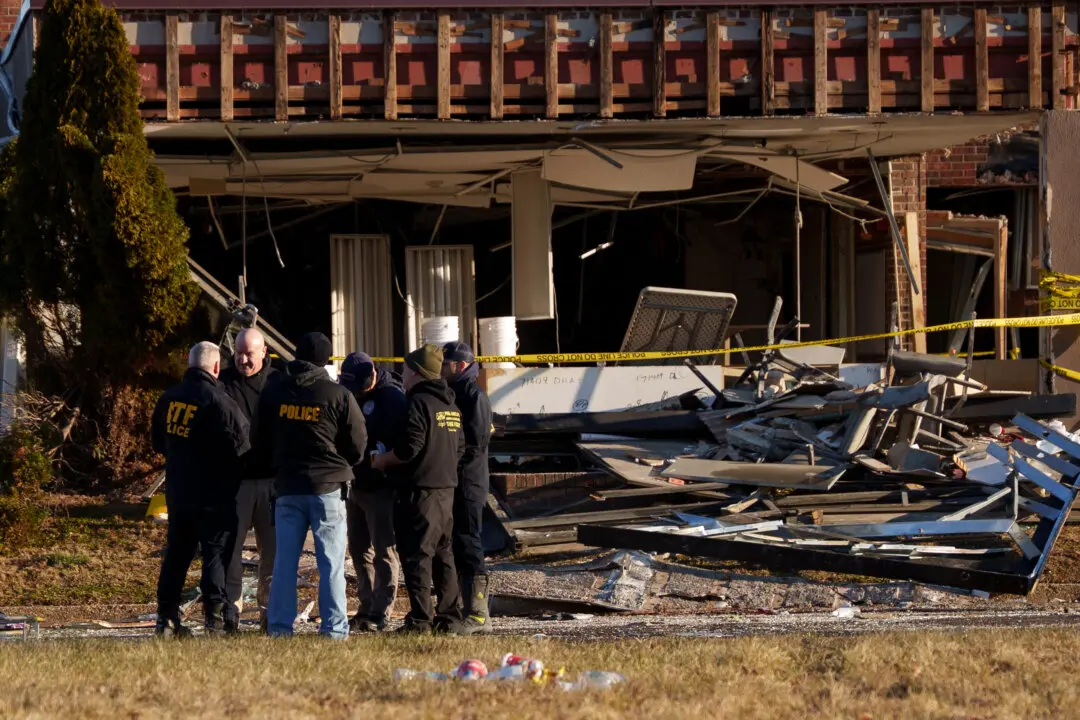ZION NATIONAL PARK, Utah—The death toll from flash floods that ripped through southern Utah reached 19 on Thursday after searchers found the final body from a group of seven hikers that were trapped in a narrow canyon in Zion National Park.
At least 12 others, including nine children, died Monday in a nearby town on the Utah-Arizona border when two cars were swept downstream by the raging waters. Search teams were still looking for a missing 6-year-old boy.
The seventh body was found Thursday in Zion after the group set out Monday, Washington County sheriff’s Detective Nate Abbott said.
Park officials have not released the identities of the seven victims, six from California and one from Nevada. But the Ventura County Sheriff’s Department in Southern California said one of the dead is Sgt. Steve Arthur, 58.
Arthur’s family told the department that he had been confirmed dead, and his wife, Linda Arthur, was on the trip and remained missing, sheriff’s Capt. John Reilly said.






